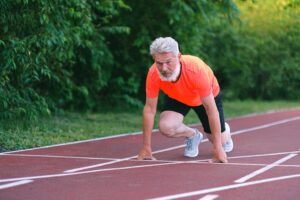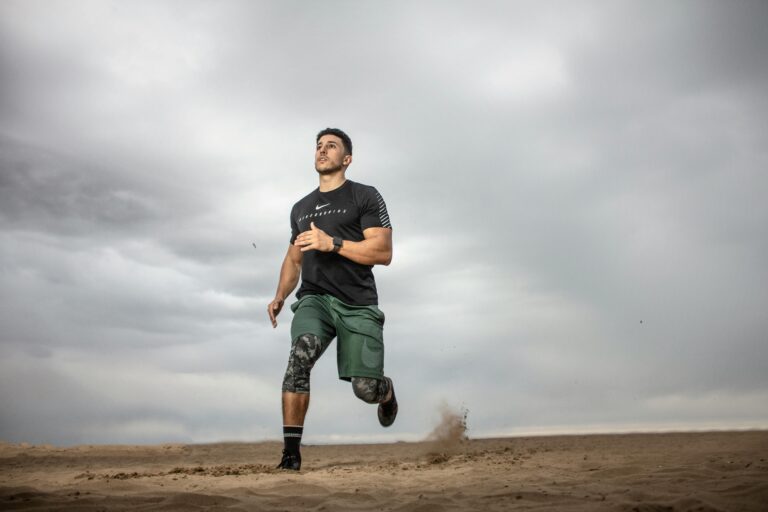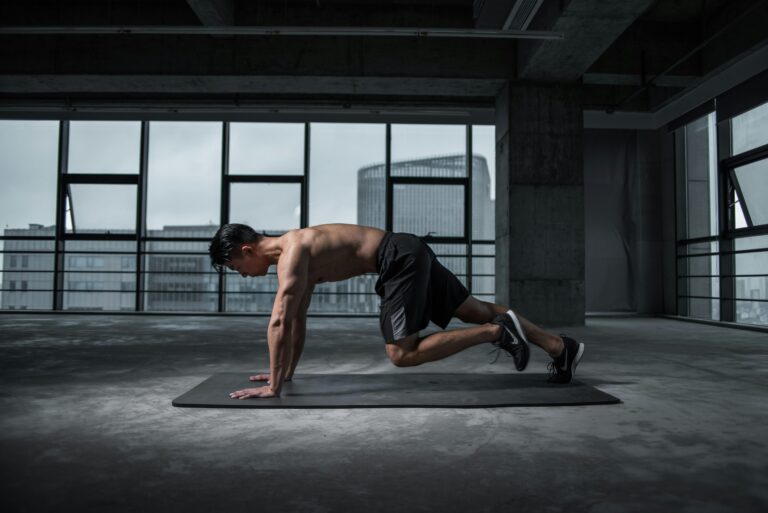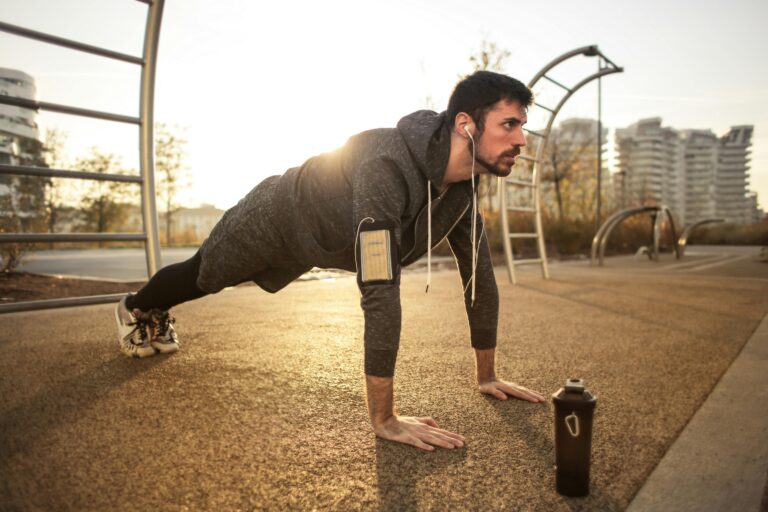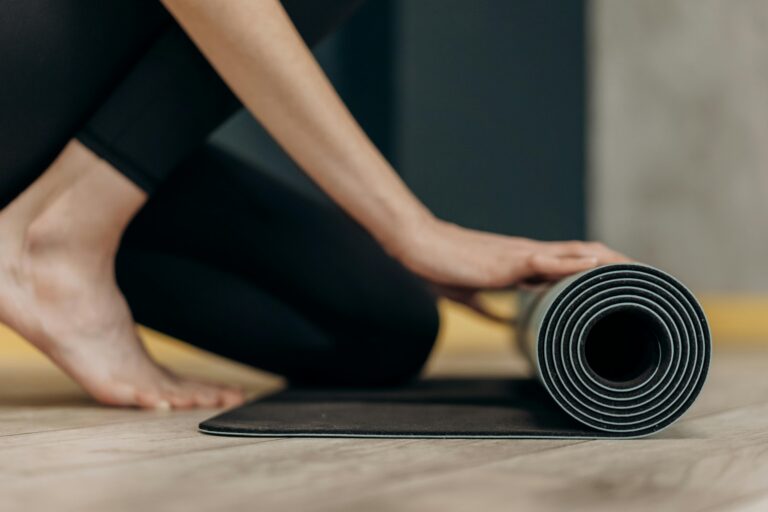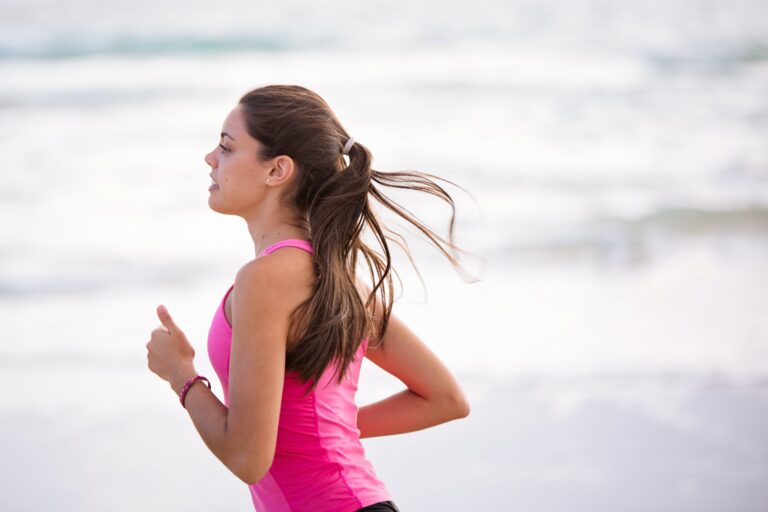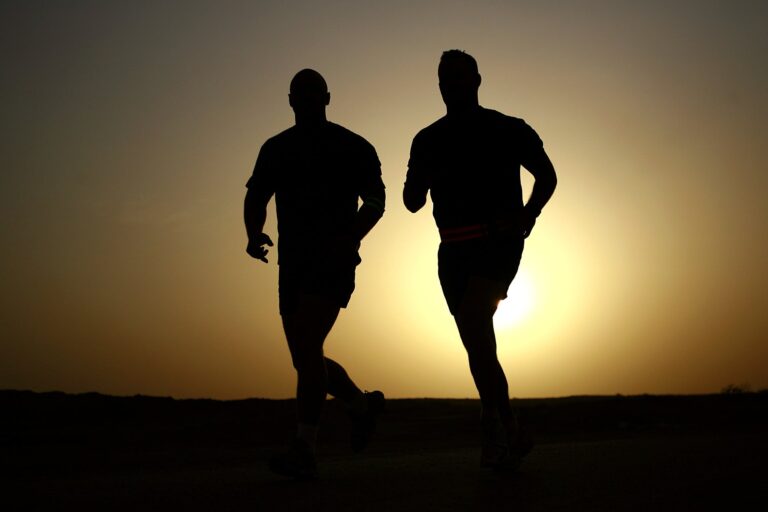User 9 Easy Exercises for a Stronger Body and Mind
Introduction:
In our fast-paced lives, maintaining a balance between physical fitness and mental well-being is often challenging. The pursuit of a stronger body and a sharper mind doesn’t always have to involve rigorous workouts or complex routines. Sometimes, simple yet effective exercises can pave the way for a healthier lifestyle, fostering both physical resilience and mental clarity.
This guide presents nine easy exercises that harmoniously target the body and mind, offering a holistic approach to enhance your overall well-being. From physical movements that strengthen muscles to mindfulness practices that cultivate mental resilience, these exercises aim to fortify your body and sharpen your mind, empowering you to navigate life’s demands with vigor and clarity.
Whether you’re a beginner taking the first steps toward a healthier lifestyle or someone looking to diversify their fitness regimen, these exercises are designed to be accessible, requiring minimal equipment and catering to various fitness levels. Committing to these practices regularly can yield profound benefits, enhancing not just your physical strength but also nurturing mental fortitude, focus, and inner calm.
By incorporating these exercises into your routine, you embark on a journey toward a stronger, more balanced self. Embrace these exercises not just as physical activities but as tools to harness the incredible synergy between body and mind, fostering a harmonious connection that promotes holistic well-being.
Are you ready to embark on this transformative journey? Let’s delve into these nine easy exercises that will empower you to build a stronger body and a more resilient mind.
Feel free to expand further on each exercise, providing instructions, benefits, and tips to make it a comprehensive guide for readers seeking to enhance their physical and mental well-being.
Exercise 1: Bodyweight Squats
Bodyweight squats are a fundamental exercise that engages multiple muscle groups, primarily targeting the quadriceps, hamstrings, glutes, and lower back. They are excellent for building lower body strength and enhancing overall stability.
How to Perform Bodyweight Squats:
- Starting Position: Stand with your feet shoulder-width apart, keeping your back straight and chest up. You can extend your arms forward for balance or keep them folded in front of your chest.
- Descending: Initiate the movement by bending your knees and pushing your hips back as if you’re sitting into an imaginary chair. Keep your weight on your heels, ensuring your knees don’t go past your toes.
- Lowering Phase: Lower your body down until your thighs are parallel to the floor or as low as comfortable while maintaining good form. Ensure your spine remains neutral, and your chest is lifted throughout the movement.
- Ascending: Push through your heels, engage your glutes, and straighten your legs to return to the starting position.
Benefits of Bodyweight Squats:
- Strengthens Lower Body Muscles: Targets quadriceps, hamstrings, glutes, and calves, promoting muscle growth and strength.
- Improves Mobility and Stability: Enhances hip and ankle mobility while improving overall lower body stability.
- Functional Movement: Mimics everyday movements like sitting and standing, contributing to functional fitness.
Tips for Effective Bodyweight Squats:
- Ensure proper form by keeping your back straight, chest up, and weight on your heels.
- Start with a comfortable range of motion and gradually increase depth as flexibility and strength improve.
- Control your descent and ascent to maximize muscle engagement and prevent injury.
Exercise 2: Push-Ups
Push-ups are a classic and effective bodyweight exercise that primarily targets the chest, shoulders, triceps, and core muscles. They’re versatile, requiring no equipment, and can be modified to suit various fitness levels.
How to Perform Push-Ups:
- Starting Position: Begin in a plank position with your hands slightly wider than shoulder-width apart, palms flat on the floor, and arms fully extended. Your body should form a straight line from head to heels.
- Descending Phase: Lower your body by bending your elbows while keeping them close to your sides. Lower yourself until your chest nearly touches the ground, maintaining a straight body alignment and avoiding sagging or arching of the back.
- Ascending Phase: Push through your palms, straightening your arms to return to the starting position without locking your elbows.
Benefits of Push-Ups:
- Strengthens Upper Body Muscles: Engages the chest, shoulders, triceps, and core, promoting upper body strength and endurance.
- Improves Core Stability: Requires core engagement for maintaining a proper plank position, contributing to overall core stability.
- Enhances Functional Strength: Mimics movements used in various activities like pushing objects, making it a functional exercise.
Tips for Effective Push-Ups:
- Maintain proper form throughout the exercise, keeping your body in a straight line and avoiding sagging or piking at the hips.
- If full push-ups are challenging, modify by performing them on your knees or against an elevated surface, gradually progressing to standard push-ups.
- Control your descent and ascent, focusing on engaging the targeted muscles for maximum benefit.
Exercise 3: Lunges
Lunges are a versatile lower body exercise that primarily targets the quadriceps, hamstrings, glutes, and calf muscles. This exercise helps improve lower body strength, balance, and flexibility.
How to Perform Lunges:
- Starting Position: Stand tall with your feet hip-width apart. Keep your hands on your hips or by your sides for balance.
- Stepping Forward: Take a step forward with one leg, ensuring your knee doesn’t extend past your toes when you lower your body.
- Descending Phase: Lower your body by bending both knees until your front thigh is parallel to the ground. Your back knee should hover slightly above the floor, creating a 90-degree angle with both knees.
- Ascending Phase: Push through the heel of your front foot to return to the starting position. Repeat the movement on the other leg.
Benefits of Lunges:
- Strengthens Lower Body Muscles: Engages multiple muscles in the legs, contributing to improved strength and muscle tone.
- Enhances Balance and Stability: Challenges balance and stability, promoting coordination and reducing the risk of injury.
- Increases Flexibility: Improves hip flexibility and range of motion, aiding in functional movements and preventing stiffness.
Tips for Effective Lunges:
- Maintain an upright torso and keep your core engaged throughout the exercise to stabilize your body.
- Ensure your front knee stays aligned with your ankle and doesn’t extend beyond the toes to prevent excess strain.
- Experiment with variations such as reverse lunges, walking lunges, or adding weights for progression.
Exercise 4: Planks
Planks are a core-strengthening exercise that engages various muscle groups, primarily targeting the abdominals, back muscles, shoulders, and glutes. This exercise is effective for building core stability and improving overall posture.
How to Perform Planks:
- Starting Position: Begin by lying face down on the floor or exercise mat. Position your elbows directly under your shoulders and lift your body, resting on your forearms and toes.
- Alignment: Keep your body in a straight line from head to heels, engaging your core muscles. Ensure your neck and spine remain neutral by looking down at the floor.
- Hold Position: Hold this position, keeping your abdominals engaged and avoiding sagging or arching of the back. Aim to maintain the plank for a specific duration, gradually increasing over time as your strength improves.
Benefits of Planks:
- Core Strength and Stability: Engages the entire core, including the abdominal muscles and lower back, promoting stability and reducing the risk of back pain.
- Improves Posture: Strengthens muscles that support proper posture, contributing to better spinal alignment and reducing slouching.
- Enhances Full-Body Endurance: Works multiple muscle groups simultaneously, aiding in overall endurance and functional strength.
Tips for Effective Planks:
- Focus on maintaining proper alignment by keeping your body straight from head to heels throughout the exercise.
- Breathe steadily and avoid holding your breath while holding the plank position.
- Modify plank variations (side plank, forearm plank, high plank) to add variety and challenge different muscle groups.
Exercise 5: Mountain Climbers
Mountain climbers are a dynamic, full-body exercise that engages the core, shoulders, arms, and legs. This exercise not only builds strength but also boosts cardiovascular endurance and agility.
How to Perform Mountain Climbers:
- Starting Position: Begin in a high plank position, with your hands directly beneath your shoulders, arms extended, and your body forming a straight line from head to heels.
- Movement: Alternate bringing one knee towards your chest, then quickly switch legs, as if you’re running in place while maintaining the plank position.
- Pacing: Maintain a steady and controlled pace, ensuring your core remains engaged throughout the movement.
Benefits of Mountain Climbers:
- Full-Body Workout: Engages multiple muscle groups, including the core, shoulders, chest, and legs, providing a comprehensive workout.
- Cardiovascular Endurance: Elevates heart rate, making it a great cardio exercise to improve endurance and burn calories.
- Enhances Agility and Coordination: Challenges agility and coordination by requiring swift leg movements while maintaining stability in the upper body.
Tips for Effective Mountain Climbers:
- Keep your hips level and core engaged to prevent your hips from sagging or lifting too high.
- Focus on controlled movements rather than speed, ensuring proper form and engaging the targeted muscles effectively.
- Modify by adjusting the pace or placing hands on an elevated surface if needed for reduced intensity.
Exercise 6: Yoga
Yoga is an ancient practice originating in India that encompasses various physical, mental, and spiritual disciplines. It involves a series of poses (asanas), breathing techniques (pranayama), and meditation or mindfulness practices.
Types of Yoga:
- Hatha Yoga: Focuses on physical postures and breathing exercises, suitable for beginners and emphasizes balance.
- Vinyasa or Flow Yoga: Involves continuous movement synchronized with breath, creating a flowing sequence of poses.
- Ashtanga Yoga: Follows a set sequence of poses in a specific order, emphasizing strength, flexibility, and breath coordination.
- Iyengar Yoga: Emphasizes precision and alignment in poses, often using props to assist in achieving proper alignment.
- Yin Yoga: Involves holding passive poses for extended periods to target deep connective tissues and enhance flexibility.
Benefits of Yoga:
- Physical Health: Improves flexibility, strength, balance, and posture while reducing muscular tension and enhancing joint mobility.
- Mental Well-being: Reduces stress, promotes relaxation, and improves mental clarity and focus through mindfulness and meditation practices.
- Breath Awareness: Encourages conscious breathing techniques that aid in relaxation and stress reduction.
Tips for Practicing Yoga:
- Start with beginner-friendly poses and gradually progress to more challenging ones as you build strength and flexibility.
- Focus on proper alignment and listen to your body, avoiding overexertion or pushing beyond your limits.
- Incorporate mindfulness and breathwork, allowing yourself to be present and attentive during practice.
Exercise 7: Walking
Walking is a low-impact aerobic exercise that can be easily incorporated into daily life. It requires no special equipment and offers a multitude of health benefits for people of all ages and fitness levels.
How to Walk for Exercise:
- Starting Out: Begin by finding a comfortable pace and gradually increase your speed as your fitness improves.
- Duration: Aim for at least 30 minutes of brisk walking most days of the week. You can break this time into smaller intervals if needed.
- Proper Form: Maintain an upright posture, swing your arms naturally, and take strides that feel comfortable.
Benefits of Walking:
- Cardiovascular Health: Regular walking can improve heart health by increasing circulation and reducing the risk of heart disease and stroke.
- Weight Management: Walking can aid in weight loss or weight management by burning calories and boosting metabolism.
- Mental Well-being: It’s known to reduce stress, improve mood, and boost mental clarity, often contributing to a sense of well-being.
Tips for Effective Walking:
- Invest in comfortable footwear to provide adequate support and reduce the risk of injury.
- Incorporate walking into your daily routine, such as walking to work, taking the stairs, or going for a stroll during breaks.
- Vary your routes to keep things interesting and explore different terrains for added challenge.
Exercise 8: Dancing
Dancing is a joyful and expressive form of physical activity that involves rhythmic movements to music. It’s a fun way to exercise and offers a wide range of health benefits while allowing for creativity and self-expression.
Types of Dancing:
- Aerobic or Cardio Dancing: Involves energetic movements and choreography that elevate heart rate, such as Zumba, hip-hop, or cardio dance workouts.
- Ballroom or Partner Dancing: Includes dances like salsa, tango, or waltz, often performed with a partner and focusing on coordination and synchronization.
- Freestyle or Contemporary Dancing: Offers freedom of movement and self-expression, allowing individuals to create their dance moves or follow more fluid choreography.
Benefits of Dancing:
- Cardiovascular Fitness: Dancing serves as a great cardiovascular workout, improving heart health and endurance.
- Improved Coordination and Flexibility: Enhances coordination, balance, and flexibility through various movements and footwork.
- Mood Enhancement: Releases endorphins, reducing stress, and promoting a sense of happiness and relaxation.
Tips for Dancing:
- Choose a dance style that resonates with you and matches your fitness level and interests.
- Start slowly, learning basic movements and gradually progressing to more complex steps or routines.
- Enjoy the process and don’t worry about perfection. Dancing is about self-expression and having fun.
Importance of Regularity and Consistency in Exercise
Regular and consistent exercise is crucial for reaping the full benefits of any workout regimen. Whether it’s strength training, cardiovascular exercises, yoga, or any other form of physical activity, maintaining a consistent routine offers numerous advantages.
1. Establishing a Habit: Regular exercise helps in forming a habit. When you stick to a consistent schedule, it becomes ingrained in your daily routine, making it easier to maintain over time.
2. Physical Adaptations: Consistent workouts prompt the body to adapt and improve. Whether it’s building muscle strength, improving endurance, or enhancing flexibility, regular exercise creates positive changes in the body.
3. Improved Performance: Consistency helps in improving performance. Whether your goal is to run faster, lift heavier weights, or master a yoga pose, regular practice allows for progression and better results.
4. Better Health Outcomes: Regular exercise has long-term health benefits. It reduces the risk of chronic diseases, improves cardiovascular health, boosts immunity, and contributes to overall mental well-being.
Tips for Maintaining Regularity and Consistency:
- Set Realistic Goals: Define achievable goals that align with your fitness level and lifestyle. Break down larger goals into smaller, manageable milestones.
- Create a Schedule: Plan your workouts in advance and designate specific times for exercise. Treat these times as non-negotiable appointments.
- Find Enjoyable Activities: Engage in exercises or activities that you genuinely enjoy. It’s easier to stick with a routine if you’re having fun.
- Mix it Up: Variety in your workouts prevents boredom and plateaus. Incorporate different types of exercises or activities to keep things interesting.
- Accountability: Consider working out with a friend, joining a fitness class, or using fitness apps to stay accountable and motivated.
- Listen to Your Body: Balance is crucial. Allow for rest and recovery days to prevent burnout and reduce the risk of injury.

